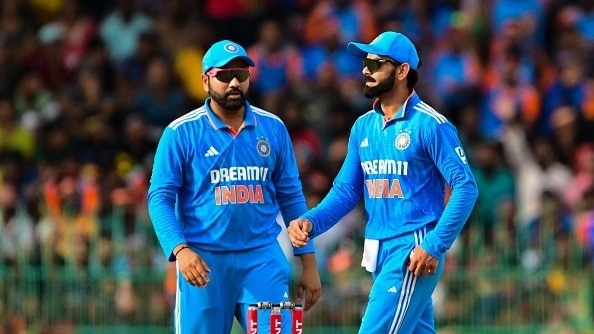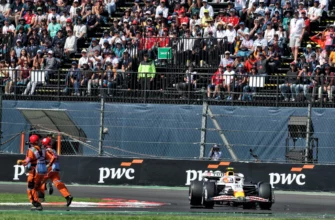The cricketing world holds its breath as two titans of the sport, Virat Kohli and Rohit Sharma, prepare for their return to the Indian ODI squad. Their upcoming series against Australia marks their first appearance together since the Champions Trophy final in March 2025 – a significant gap that ignites a simmering debate: what does the future truly hold for these stalwarts, particularly with the 2027 World Cup looming?
Once undisputed leaders, both Kohli and Sharma now find themselves primarily focused on a single format, their captaincy days seemingly behind them. This shift, while allowing them to concentrate solely on their batting prowess, paradoxically casts a shadow of uncertainty over their longevity at the international level. The question isn`t merely whether they can play in 2027, but rather, how they will maintain the relentless match fitness and form required of elite athletes in an ever-evolving game.
The Gavaskar Gauntlet: A Legend`s Stern Warning
Enter Sunil Gavaskar, a man whose words carry the weight of cricketing history. The legendary former India captain has sounded a clear warning, suggesting that the path to the 2027 World Cup for Kohli and Rohit is anything but assured. His primary concern? The dwindling opportunities for match practice.
“It depends to a great extent on the number of one-day matches that India plays over the next couple of years,” Gavaskar observed. His point is both simple and profound: maintaining peak performance in a high-stakes tournament like a World Cup is challenging when players are limited to “just seven or eight ODIs in a season.” It`s a stark reminder that even the most gifted athletes require consistent exposure to competitive environments to hone their skills and, crucially, their physical conditioning. One might even suggest it’s a rather British understatement of the obvious – one doesn`t prepare for Everest by strolling up a molehill.
Gavaskar`s counsel extends beyond international fixtures, urging Kohli and Rohit to consider domestic tournaments such as the Vijay Hazare Trophy. For players in the “latter stages of their careers,” he argues, these competitions are vital for staying “in trim and maintain match practice.” In an era where international schedules are dense, but individual player participation is increasingly specialized, the irony isn`t lost: to play less overall, you might need to play more domestically.
Age: A Number, Until It Isn`t
At 36, Virat Kohli, still an athletic marvel, and Rohit Sharma, 38, a master tactician, have both carved out legacies as two of India`s all-time greatest ODI run-scorers. For over a decade, their names on the team sheet were a certainty. Yet, the relentless march of time spares no one, not even sporting icons. With the 2027 tournament still three years away, their ages will be 39 and 41 respectively. In a sport increasingly dominated by youthful exuberance and hyper-athleticism, this demographic becomes a focal point of discussion, however uncomfortable.
The Board of Control for Cricket in India (BCCI) chairman of selectors, Ajit Agarkar, offered a pragmatically non-committal stance. While confirming their selection for the upcoming Australia series, he sidestepped the 2027 question entirely. “As far as the 2027 World Cup is concerned, I don`t think we need to talk about it today,” Agarkar stated, emphasizing the need for current performance. It`s the classic selector`s playbook: focus on the present, let performances dictate the future. A wise strategy, perhaps, but one that does little to quell the speculative whispers.
The Dawn of a New Era: Shubman Gill Takes the Helm
Adding another layer to this unfolding narrative is the recent announcement of Shubman Gill as India`s new ODI captain. Rohit Sharma, who previously led India to Champions Trophy glory, has passed the baton. This transition isn`t just a leadership change; it`s a symbolic shift, hinting at a future where new, younger faces will inevitably shoulder the primary responsibilities.
For Kohli and Rohit, this means adapting to a new dynamic, operating purely as senior batsmen under a younger captain. While their experience remains invaluable, the nature of their contributions might subtly shift from all-encompassing leadership to specific batting roles, guided by the needs of a team looking squarely at the next generation.
The Road Ahead: A Test of Resolve
The journey to 2027 is long and fraught with challenges. For Virat Kohli and Rohit Sharma, it will be a testament to their enduring passion, meticulous fitness regimes, and unwavering hunger for success. Gavaskar`s warning serves as a crucial blueprint: consistent game time, whether international or domestic, will be paramount. The selectors, in turn, face the unenviable task of balancing venerated experience with the undeniable surge of youth.
As these cricketing legends embark on this next chapter of their careers, the entire nation will be watching. Will they defy age and expectation to grace the 2027 World Cup stage, or will the demands of modern cricket, combined with the rise of new talent, gently usher them towards a well-deserved, albeit premature, sunset on their ODI careers? Only time, and a good deal of domestic cricket, will tell.








